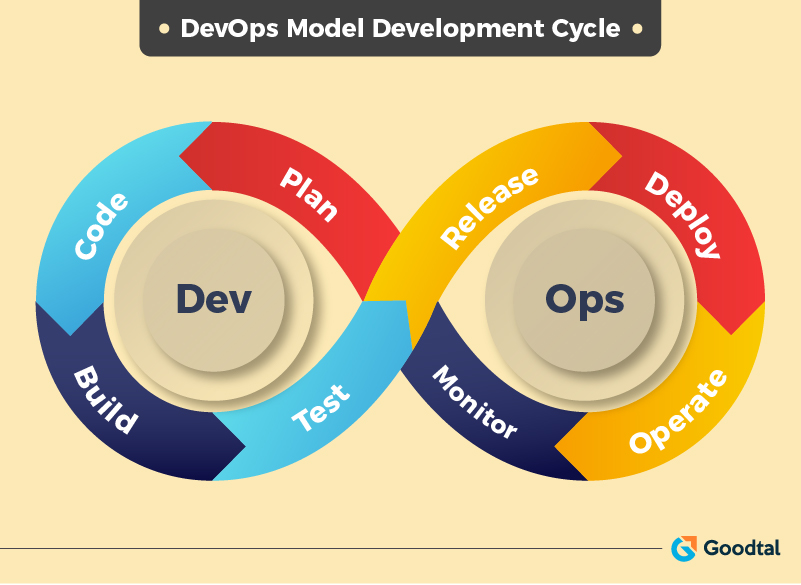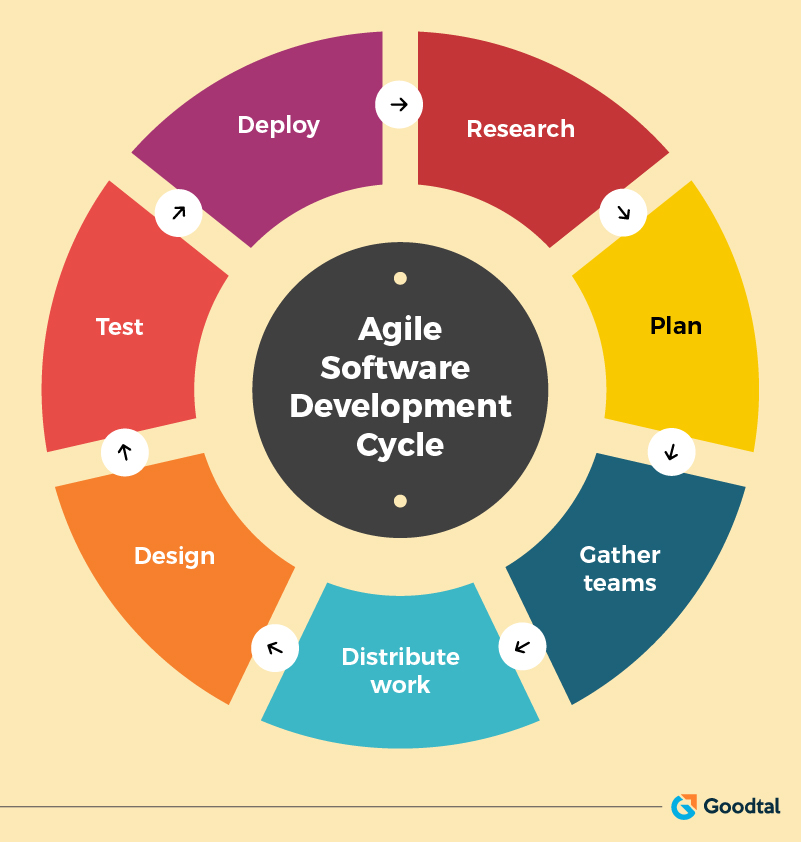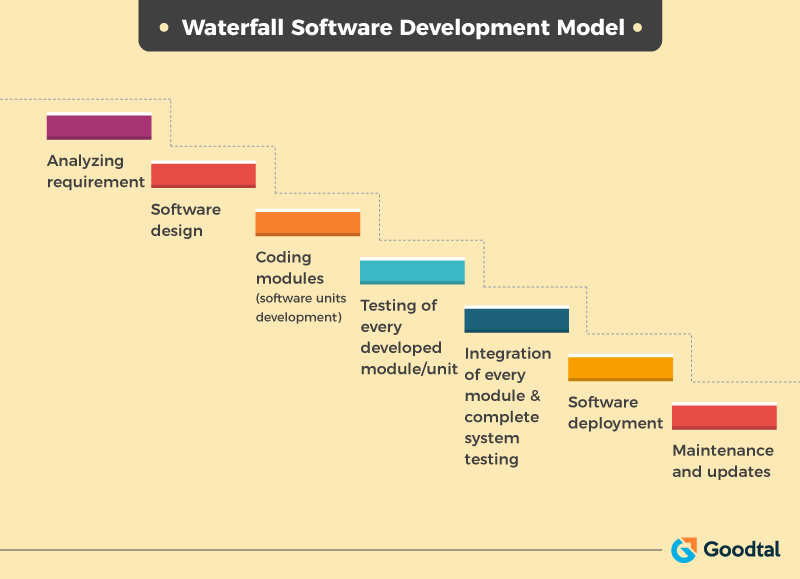
Software development is indeed a time-consuming and complex process. The overall software development time, money, and complexity depend highly on the type of software built. But there is one more parameter on which all these parameters depend; software development methodologies.
The overall software development cost and overall development time vary highly based on the software development methodology. Hence, choosing the suitable method based on your budget and time is imperative.
Most people don't know that there are a range of software development methods that they can choose while outsourcing the task to software development companies.
In this post, we will discuss some of the most used software development methodologies worldwide. So, let's move forward and start by getting an overview of software development.
A Brief Overview of Software Development
Today, it is impossible not to find software in our surroundings. Humans depend on a range of software to accomplish day-to-day tasks. Be it a smartphone, apps, smart appliances, or security systems, almost all of the items we use today are powered by one or more software.
With the growing dependency on software, the software development market is flourishing. The software market is growing rapidly and is anticipated to reach USD 659 billion by 2023. This number is evidence of the rising software development demand.
Software is broadly categorized into two types: system software and application software.
System software is all software that powers up a computer or hardware. For example, an operating system can be classified as system software as it powers up various devices such as smartphones, tablets, laptops, etc.
Meanwhile, application software is developed to perform a specific task. And it runs on system software-powered devices. For example, the Android operating system is system software that powers Android smartphones. Meanwhile, the apps such as gaming apps, entertainment apps, etc., running on that Android smartphone can be classified as application software.
So, the type of software development can be classified as system software development and application software development. Businesses need to figure out first the type of software they need for their business.
Let's move ahead and discuss some of the key software development methods popular amongst the top software development companies and developers around the world.
A Brief Overview of Top Software Development Methodologies
There are many software development methodologies, but in this post, we will discuss the top three of them. The mentioned three methodologies are the most commonly used and most beneficial.
So, let's move ahead and discuss these three software development methodologies in more detail.
#1 DevOps Model
DevOps is one of the most popular software development methodologies around the world. According to Statista, in a survey conducted on software developers, it was found that approximately 47% of respondents have been using the DevOps method for software development.
The DevOps model includes a set of practices and tools that automate the entire software development process and thus reduce development and service deployment time.
DevOps practices aim to synchronize the development team (Dev) and IT operations team so that they work together and deliver services and products at a high velocity.
The DevOps model employs high-tech technology and tools that allow teams to develop products faster with much accuracy, efficiency, and quality. The tools and technologies used in this methodology allow both the development and operations teams to collaborate and communicate better.
The name DevOps itself suggests that this method is all about building collaboration between two teams, development and IT operations, and reducing the overall software development life cycle.
The infographic below shows the DevOps model development cycle.

The whole cycle starts with planning, followed by coding and creating the entire code base. Once the codebase and software design part is completed, the whole unit undergoes testing and, when considered fit, is deployed. Then the work of maintenance of observing the deployed software for faults is carried out.
Continuous feedback is gathered, and the system is observed periodically. This completes one cycle of the DevOps model of software development.
Let's look at some of the key benefits of DevOps.
Pros of DevOps:
- Faster release of new updates and features
- Excellent collaboration and work synchronization between software development and operations teams.
- Shorter software development life cycle.
- Excellent automation
- Faster time to market
- Better customer satisfaction
Cons of DevOps:
- Highly complex structure.
- Higher capital cost.
- Difficult to establish real-time collaboration between various teams, especially in larger organizations.
Suggested Reading: The Future of Software Development: Will AI Replace Human Developers
#2 Agile Software Development
Agile software development is one of the second most used software development methodologies after DevOPs.
The agile software development method divides the entire software development task into smaller tasks. These tasks are then distributed to the organized teams so that they can complete them efficiently with minimal time possible.
The main focus of the agile software development methodology is to maintain continuous delivery of parts of the software after multiple iterations and not the whole project at once.
One of the most critical features of agile software development is that it is easier to make and drive changes which are too time-consuming and expensive in traditional software development methods. Because of short iterations carried out frequently in agile software development, passing on changes and detecting faults is much easier.
The infographic below shows the agile software development life cycle.

Pros of Agile Software Development
- Faster deployment of software.
- Highly flexible methodology.
- Implement changes at any time.
- Short iterations minimize the chances of error and loopholes.
- Lower development time.
- Cost-effective
- Better collaboration and division of tasks between teams
- There is less focus on the process and more on team members/shareholder interactions and feedback.
- Better team and client interaction helps build quality products matching expectations.
Cons of Agile Software Development
- Becomes often too laborious for developers.
- Lack of documentation as the work is more based on real-time communication within teams and with shareholders.
- Lack of documentation often leads to difficulty in adjusting for the new users.
- Highly dependent on client and user feedback, leading to misleading suggestions often based on a lack of end-user understanding and clarity regarding their requirements.
- Less effective for large organizations where real-time collaboration between teams is complex.
Suggested Reading: Are We Prepared for the Challenges in Software Development?
#3 Waterfall Model
The waterfall model, a software development methodology, is another standard method amongst software developers worldwide. In the survey by Statista, it was mentioned that approximately 26% of the respondent developers said that they use the waterfall software development methodology.
The waterfall model is an easily understandable and simplistic model of software development. In this model, unlike the two models discussed above, the tasks are performed in a cascade style, i.e., when a particular step or operation is done, only then can the team move to another part of the software development.
The infographic below shows some of the key phases or steps of a waterfall software development methodology.

The infographic shows that the main difference between the waterfall and the other two discussed models is that the development model does not follow a cycle. Instead, it is a flow diagram. As already mentioned before, this is because the team moves to the second phase only when one phase is complete.
Now, let's discuss some of the pros and cons of this software development methodology.
Pros of the Waterfall Model
- Easy to understand and simple structure
- Constant and stable requirements throughout the project life cycle.
- Easy to evaluate the performance and outcome of every stage.
- Easy to follow goals.
- Better visibility in every step of the development cycle for both teams and shareholders.
Cons of the Waterfall Model
- Costly
- Time-consuming
- Difficult to make changes.
- Limited and late testings.
- Prone with errors and entire project revisions due to minimal testing.
While outsourcing software development, businesses can also choose the software development company or developer based on their expertise in a particular programming language. For more information, check out Goodtal's list of top Java developers, Python developers, and many more to find the best and most reliable software developers worldwide.
Wrapping Up
Software development is a complex, time-consuming, and quite expensive task. No matter how difficult and costly it might be, the software has become an essential part of daily life, and hence investing in them has become a necessity for businesses.
Be it a small or large business, software is necessary for each of them but due to cost constraints, small firms often find it challenging to invest in software development.
In this post, we discussed some key software development methodologies, some of which are too affordable and better solutions for small businesses looking for software development on a minimal budget. Agile and DevOps software development methodologies are the best options for every type of business looking to develop software in minimal time and costs.
We also discussed the waterfall model, a traditional but one of the top five software development methodologies. These software development methodologies must be known to businesses and emerging developers.
